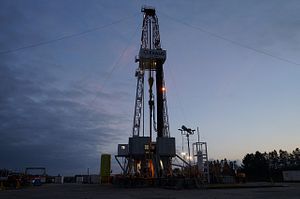Already a global powerhouse in international mineral exports, Australia is set to become the world’s biggest producer of liquefied natural gas (LNG) in 2019. Paradoxically, however, its domestic LNG supply is flailing, with Australia home to some of the most expensive gas prices in the world. In recent weeks, national government decisions have sought to increase domestic supply, but have also raised questions about the Australian gas industry and its relationship with a burgeoning Asian market.
The first of these new moves sees the lifting of a hydraulic fracturing (“fracking”) moratorium in the Northern Territory (NT), Australia’s third largest federal division by area. Following an 18 month independent inquiry, the NT government has approved onshore gas production, leaving more than half of its total area open to unconventional mineral extraction.
It is hoped that this untapped gas supply can provide the domestic east coast market with an economic reprieve. However, some well-credentialed observers in the field are skeptical of the economic and environmental viability.
Tim Forcey is a leading authority in the minerals industry and former BHP engineer who has produced research on gas extraction for the University of Melbourne. He told The Diplomat that he doubts the viability of piping gas to the east coast to put downward pressure on prices. “There are already substantial gas supplies in Queensland and the east coast of Australia that are shipped to Asia instead of being used domestically… attempting to pipe the gas from the Northern Territory seems like an expensive way to lower energy bills,” he said. Forcey added that a similar scenario could eventually occur to the gas supplies in the NT. “There are already gas processing facilities in the Northern Territory and it is certainly very cheap to export minerals to Asia so we may see [gas exports] happen in the future if fracking goes ahead.”
Forcey’s last point is a pertinent one, as it is yet to be seen if fracking will commence at all. NT’s ruling Labor Party is split on the issue, with a majority of party delegates voting against fracking at the Labor Party’s annual conference this month. Opposition centers on risks posed to both the ecology of the Northern Territory and the wellbeing of the area’s First Nations communities. In particular, there are fears that onshore shale gas development will occur in “an area of high conservation value.” Moreover, the recent inquiry suggests that “the broader Aboriginal community has not been adequately informed about any onshore shale gas industry and its potential impact on Aboriginal communities.”
Asia will have access to Australian gas supplies, irrespective of whether onshore extraction proceeds. Gas is driving the local economy, with the Territory soon set to accommodate one of the largest and most ambitious LNG projects in the world. A Japanese mineral company, Inpex, is due to commence its long awaited US$34 billion dollar Ichthys project in the June quarter, which will directly pipe gas supplies off northwestern Australia to the NT. After reaching land, the gas is likely to be exported to foreign markets through the Port of Darwin, which has had its own share of controversy regarding Asian mineral companies.
In 2016, the port was leased to mineral conglomerate Landbridge, which has direct ties to the Chinese Communist Party. The deal drew international criticism, including by then-U.S. President Barack Obama.
The Australian representative of the deal, then-federal Trade Minister Andrew Robb, signed off on the legislation in 2015. The following year, Robb quit federal parliament and it was subsequently reported that he was employed by Landbridge to work as a “high level economic consultant,” with an annual salary of AU$880,000 dollars.
Now, Landbridge is back in the spotlight. Last month, Federal Resources Minister Matthew Canavan announced a multimillion dollar grant to Chinese gas producer Westside – a subsidiary of Landbridge — as part of a wider Gas Acceleration Program to deal with high domestic prices. By “fast-tracking new project developments,” the grant is hoped to put downward pressure on prices by pushing gas supplies away from international export and towards the domestic Australian market.
While Westside has said that the grant will be used to keep more gas onshore, the Australian Broadcasting Corporation reported that the company’s Chinese language website declares “at present, natural gas produced by Westside Corporation Limited is ultimately shipped to South East Asia predominantly.” All this adds to the confusion around the domestic gas industry and the challenges Australian federal government’s faces in trying to ease the energy bills of its citizens.
As the gas industry grows in Australia, it seems inevitable that the influence of Asian mineral companies on the country’s domestic and international energy markets will grow too. To what extent remains to be seen.
Nick Rodway is a writer based in Australia. His reporting on environmental and First Nations issues has featured in a wide range of international media, including Al Jazeera, The Jakarta Post, and Norway Today.

































